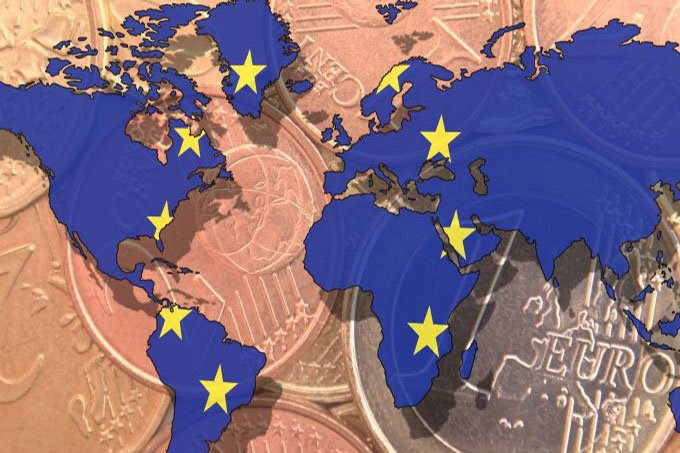|
Could this be down to the spread of the Delata variant? The jury is still out on this but its easy to think that this will probably have an impact. Consumer confidence may take a dip when comes to going out shopping if the fear of COVID-19 once again takes hold, but that doesn't seem to be playing out right now. According to a weekly ONS survey, the proportion of adults visiting a shop for non-essentials is noticeably higher now than it was at the end of May with strady footfall numbers. So what we could be seeing is a degree of rebalancing with more spending moving towards services and away from retail goods. Its also worth noting that spending on fashion was down a bit in June, but still higher than it was at any point in the pandemic before shops reopened in April. Looking forward, what is on the radar for the retail sector? It's looking steady but there is the potential for some stronger headwinds with Delta and other new variants. If the Delta wave subsides, which the modelling data suggests should be happening around this time, and indeed, the actual data suggests that cases are declining, then the future is looking brighter. There is plenty of demand and consumers may have more savings to spend. Whether they actually do spend it is another matter. Those savings are more heavily concentrated in the higher earners who are less likely to spend. Low income earners may have seen savings fall during the pandemic and with furlough schemes ending in autumn with possible redundancies, there is a possiblility that this could impact the high street and retail sales. In summary, we could see incremental gains in retail sales through the rest of the year, which will contribute to the overall GDP number. We may see more rebalancing as services get back into full swing but all of this is predicated on the Delta wave fizzling out into autumn.
0 Comments
However, the union representing workers at BHP’s Escondida mine voted to reject the company’s latest contract offer. The two sides have entered a mediation period, after which the union can initiate a strike if an agreement cannot be reached.
Looking at copper production through the year so far, the International Copper Study Group (ICSG) has estimated that the global copper market had a surplus of 70,000 metric tons through the first four months of the year. The ICSG estimated global copper production rose by 4% through the first four months of 2021 compared with the same period in 2020 and concentrate production rose by 6%. In Chile, the world’s top copper producer, copper mine production fell by 2% and its concentrate production rose by 3%. Elsewhere, Peru, the second largest producer, saw its copper mine production rise by 10% year over year during the four-month period. However, Peru’s production during the period fell by 27% compared with the first four months of 2019. The ICSG noted that Indonesia’s copper output rose by 80% due to a ramp-up at the Grasberg mine. Looking at global refined copper, production rose by 4% during the first four months of the year, however, Chile’s refined copper output dropped by 8%. Global refined copper production from scrap rose by 3% during the period. From a price perspective, the market has been trading sideways for a month but the LME three-month copper price has made gains over the last two weeks. Traders are now focused on the outcome of the labour situation at BHP's Escondida mine.
The recovery from the lockdown is looking healthy with a 1.5% increase in retail sales in June. Indeed, sales are stronger than last year and this shows robust demand. The vaccine rollout is slower than expected but making progress as restrictions are being lifted. These factors are providing more tailwinds for the economic recovery.
The growth in July was mainly seen in non-food products, while internet sales decreased. So what we are seeing here is more of a rebalancing between online sales and bricks and mortar sales. Consumers are regaining confidence in venturing back to the shops safely. We are not out of the woods yet because we've still got concerns on the Delta variant. Looking forward to to the coming quarter, it remains to be seen whether we'll see some follow with good retail sales numbers in July. Was this just a good months with demand catching up after the lockdowns? We'll have to wait and see on that one. We've got some headwinds in terms of the risks presented by the Delta variant and the potential for more restrictions and lockdowns. However, we've got some strong tailwinds coming from strong consumer demand and this will certainly add to the positive outlook for GDP as the Eurozone economies continue to recover.
The USDA has quite a challenge in trying to calculate these early yield figures, especially with so much time left in the growing cycle. August estimates historically align with January final tallies, though large shifts are not unusual as evidenced in last year’s revisions.
There is also a strong probability that Brazilian corn exports will fall dramatically this month with trade forecasts showing exports of 118 million bushels of corn in August, down from 264 million bushels the same time a year ago. This is a result of the La Niña-induced drought this year that has left Brazilian corn production tight and not able to fulfil strong export demand. Brazil’s top corn customers include Egypt, Vietnam, Taiwan, and Iran. These countries will likely be forced to turn to other supplies in the U.S. or Black Sea region in light of Brazil’s corn shortage. Weekly ethanol production data will be released today and there is a strong probability that this won't be greater than the 42.5 million – 44.8 million gallon/day mark. Last week’s report saw weekly output volumes shrink over 1% to 42.6 million gallons/day as stockpiles rose on flat consumer gasoline demand. Weekly ethanol stocks rose 1% last week to 955 million gallons which is the highest stockpile since the cold snap in mid-February. Weekly gasoline usage averaged 392 million gallons/day for the week ending July 23rd, which is in line with the 356 million – 398 million gallon/day, weekly range in which Americans have been purchasing gasoline this summer. Last week's report provided a glimmer of hope for the ethanol industry in that ethanol blending by refiners increased 2.5% on the week to 39 million gallons/day. If today’s report shows an increase in blending volumes, even a small increase, then the future maybe a little bit brighter for ethanol and corn producers across the U.S. However, the ethanol industry is largely dependant on drivers and what driving activity looks like coming out of the pandemic, particularly in the summer period. Ethanol is increasingly dependant on gasoline consumption breaking out of the current summer usage range to raise ethanol prospects for corn growers. |
AuthorTim the trader Archives
January 2025
Categories |
Site powered by Weebly. Managed by iPage




 RSS Feed
RSS Feed